FAQ - Advanced Bathroom Queries
Where Does the Toilet Drain Into

As I position myself before the toilet, pondering the precise destination of the waste, it leads me to question: what is the final repository for the contents of the toilet drain?
In this article, we will delve into the intricate anatomy of a toilet system and explore the journey our waste takes from the bowl to the sewage treatment plant.
Join me as we unravel the scientific processes and environmental impact of toilet waste disposal, shedding light on this essential yet often overlooked aspect of our daily lives.
Key Takeaways
- The toilet system consists of various components such as plumbing system, toilet bowl, trap, pipes, and vent stack, which work together to transport waste away from the toilet and prevent leaks and odors.
- Water flow and mechanisms during the flushing process, including gravity, siphoning, and the trapway, play a crucial role in effective waste disposal.
- The waste disposal process involves gravity causing water to flow from the tank into the bowl, followed by the siphoning effect that pulls waste and water down the drainpipe into the sewage system.
- Treated water can be disposed of through various methods such as land disposal and discharge into water bodies, with careful monitoring necessary to meet regulatory standards and prevent harm to aquatic ecosystems.
The Anatomy of a Toilet System
The toilet system consists of several essential components that work together to efficiently remove waste from the bathroom. One of the key aspects of toilet design is the plumbing system. This intricate network of pipes and valves ensures that waste is transported away from the toilet and into the sewage system.
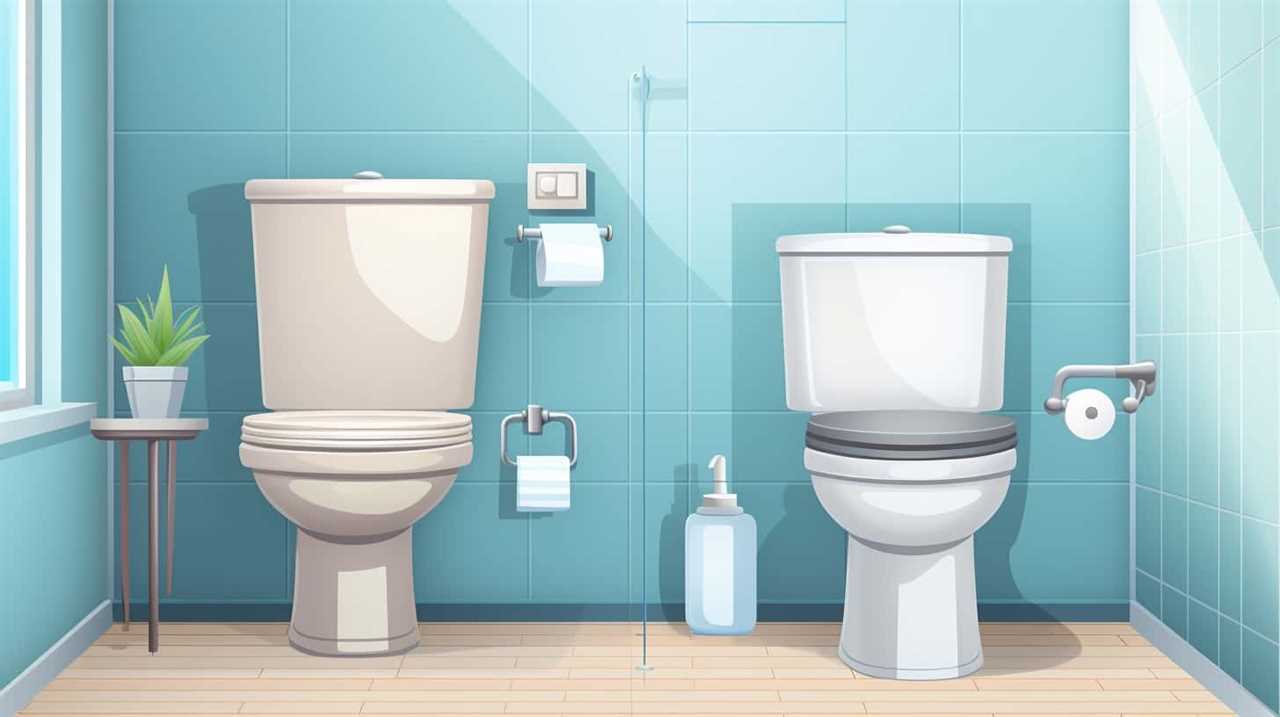
At the heart of the plumbing system is the toilet bowl. It’s designed to efficiently collect waste and provide a seal to prevent any leaks or odors. The bowl is connected to a curved pipe called the trap, which holds a small amount of water to prevent gases from entering the bathroom.
From the trap, the waste is then transported through a series of pipes. These pipes are typically made of PVC or cast iron and are designed to withstand the corrosive nature of waste materials. They’re also sloped to allow for gravity to assist in the flow of waste.
In addition to the pipes, the plumbing system also includes a vent stack. This vertical pipe allows for the release of trapped gases and helps maintain proper pressure within the system.
The Flushing Process: What Happens When You Flush
When you flush a toilet, water flows from the tank into the bowl through a mechanism called the flush valve. This sudden rush of water creates a strong force that propels waste and debris down the drain pipe and into the sewer system.
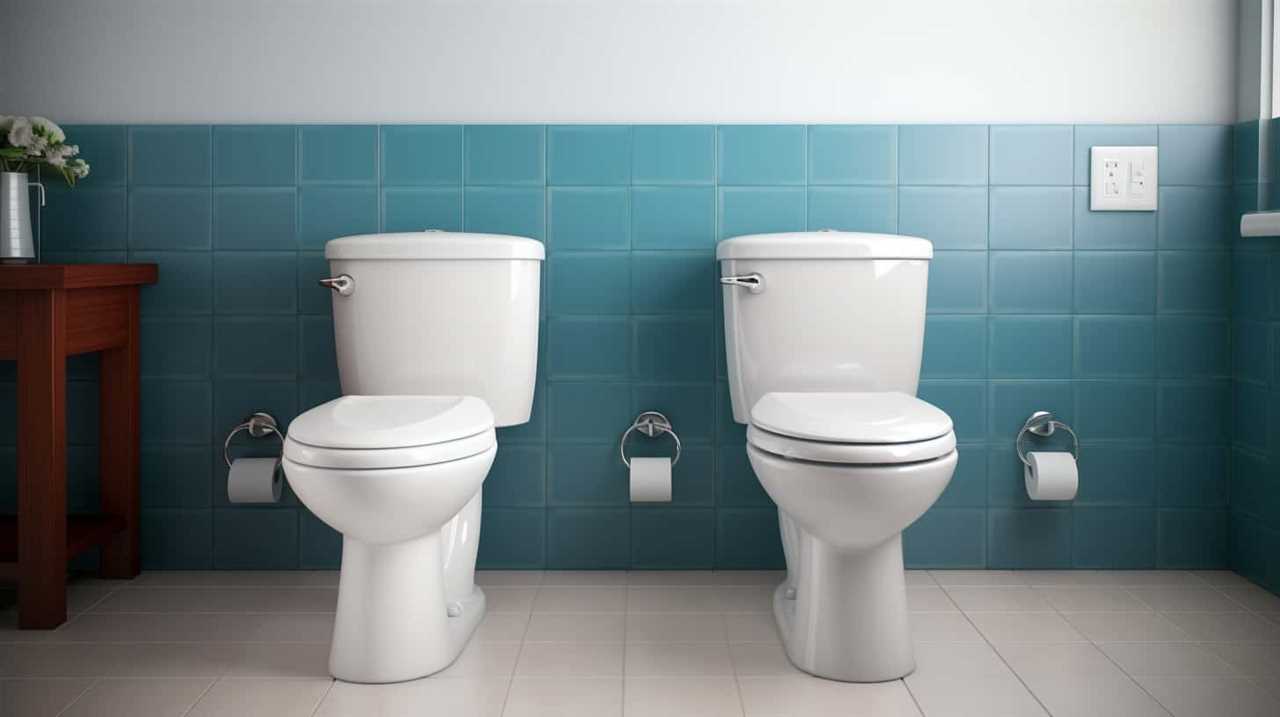
As the water and waste travel through the pipes, gravity plays a crucial role in the disposal process, allowing everything to flow downward and out of your home.
Water Flow and Mechanisms
Every time I flush the toilet, water swiftly rushes down the drain. This is due to the complex water flow and mechanisms that are involved in the flushing process. Understanding how water flows during a flush is essential for ensuring proper water treatment and sewage disposal.
Here are three key aspects of the water flow and mechanisms during the flushing process:
- Gravity: When you push the flush button or handle, gravity comes into play, causing the water to flow from the toilet tank into the bowl.
- Siphoning: As the water enters the bowl, it creates a siphoning effect, pulling the waste and wastewater down into the drainpipe.
- Trapway: The trapway, a curved pipe at the base of the toilet, helps to maintain a water seal, preventing any foul odors from escaping back into the bathroom.
Understanding the water flow and mechanisms during the flushing process is crucial for ensuring effective waste disposal.
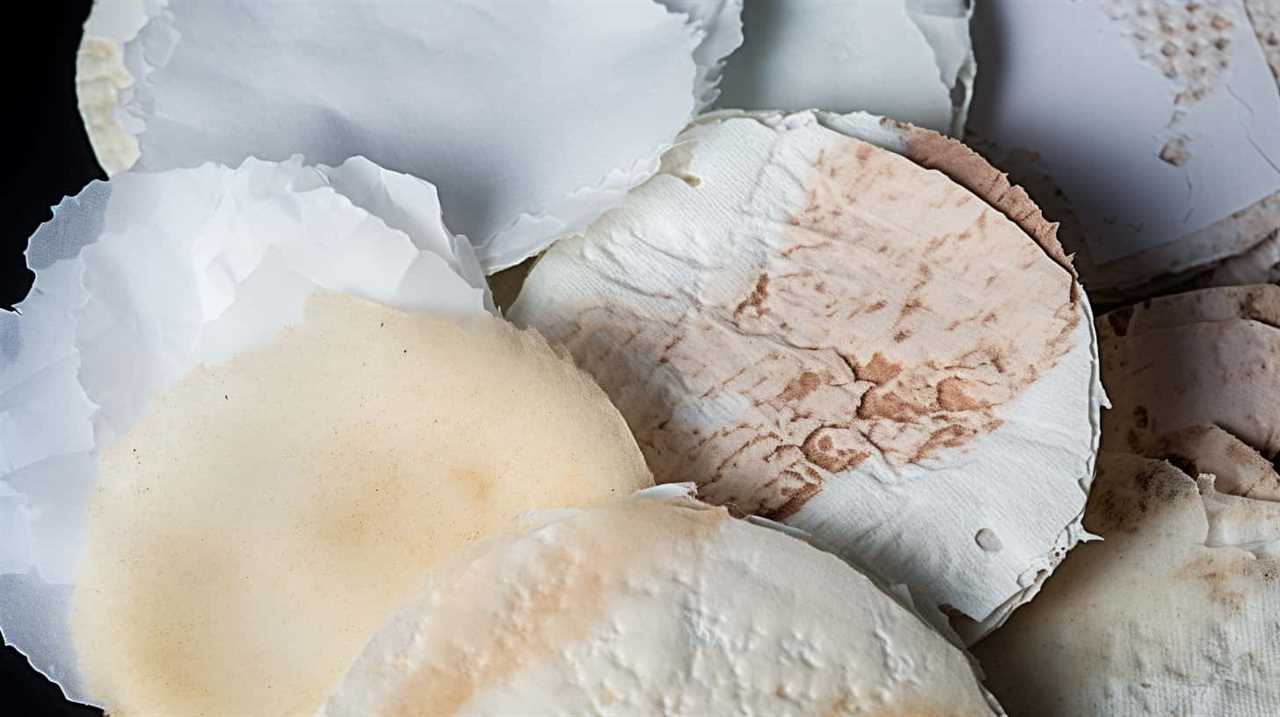
Now, let’s delve into the next section: the waste disposal process.
Waste Disposal Process
As I push the flush button or handle, gravity comes into play, causing the water to flow from the toilet tank into the bowl, initiating the waste disposal process. Once the water enters the bowl, it creates a siphoning effect, pulling the waste and water down through the trapway and into the sewage system.
This simple yet effective mechanism relies on the force of gravity to transport the waste to its next destination. Waste management techniques and sewage treatment technologies play a crucial role in ensuring that the waste is properly treated and disposed of. These technologies involve various processes such as screening, sedimentation, biological treatment, and disinfection, which remove harmful contaminants and pathogens from the wastewater.
Now, let’s explore the next step in the waste disposal process: from toilet bowl to sewer pipes.

From Toilet Bowl to Sewer Pipes: The First Stop
After flushing, the toilet drains its contents into the sewer pipes through a series of interconnected channels. This process is crucial for proper waste disposal and requires regular maintenance to prevent blockages.
Here are three key points to consider when it comes to toilet drain maintenance and blockage prevention:
- Proper usage: To prevent blockages, it’s essential to use the toilet correctly. Avoid flushing anything other than toilet paper and human waste. Flushing items like wipes, sanitary products, or excessive amounts of toilet paper can lead to clogs and damage to the drainage system.
- Regular cleaning: Regular cleaning of the toilet bowl and drain is essential to remove any buildup of mineral deposits, bacteria, or other debris. Use a toilet brush and appropriate cleaning agents to keep the drain clear and prevent blockages.
- Professional inspection: Periodic inspection by a professional plumber is recommended to detect any potential issues with the toilet drain. They can identify early signs of blockages or damaged pipes and provide necessary repairs or replacements to ensure proper functionality.
The Journey to the Sewage Treatment Plant
As we continue our exploration of the journey from the toilet to the sewage treatment plant, it’s important to understand the sewage treatment process and its environmental impact.
The sewage treatment process involves several stages, including physical, chemical, and biological processes, which effectively remove pollutants and contaminants from the wastewater.

Additionally, it’s crucial to consider the environmental impact of sewage, as untreated or poorly treated sewage can have detrimental effects on ecosystems and public health.
Sewage Treatment Process Explained
During my visit to a sewage treatment plant, I was amazed to learn the intricate journey that wastewater takes from the toilet to the treatment plant. Understanding the sewage treatment process is crucial for maintaining a well-functioning sewage system and ensuring the cleanliness of our environment.
Here is a brief explanation of the sewage treatment process:
- Collection: Wastewater is collected through toilets, sinks, and drains in homes and businesses. It then flows through a network of pipes and sewer lines, designed to transport the wastewater to the treatment plant.
- Preliminary Treatment: At the treatment plant, the wastewater undergoes a preliminary treatment process. Large objects like debris and grit are removed, while screens and grit chambers help to separate solid materials from the liquid wastewater.
- Primary Treatment: In this step, the wastewater is allowed to settle in large tanks, allowing solids to settle at the bottom and oils and grease to rise to the surface. These solids are then removed, creating a sludge that can be further treated and processed.
Environmental Impact of Sewage
Throughout the journey to the sewage treatment plant, the significant environmental impact of sewage becomes evident.

Sewage, containing a mixture of human waste, chemicals, and other pollutants, poses a serious threat to water quality and the surrounding ecosystem. When sewage is discharged into water bodies, it results in water pollution, which can have harmful effects on aquatic life and human health.
The high levels of nutrients and organic matter in sewage can lead to excessive growth of algae, depleting oxygen levels in the water and damaging the balance of the ecosystem. Additionally, the presence of harmful pathogens and chemicals in sewage can contaminate water sources, making them unsafe for consumption.
Therefore, proper treatment and management of sewage are crucial to minimize the environmental impact and prevent further ecosystem damage.
Transitioning into the subsequent section, let’s now explore how sewage is processed and treated to mitigate these issues.
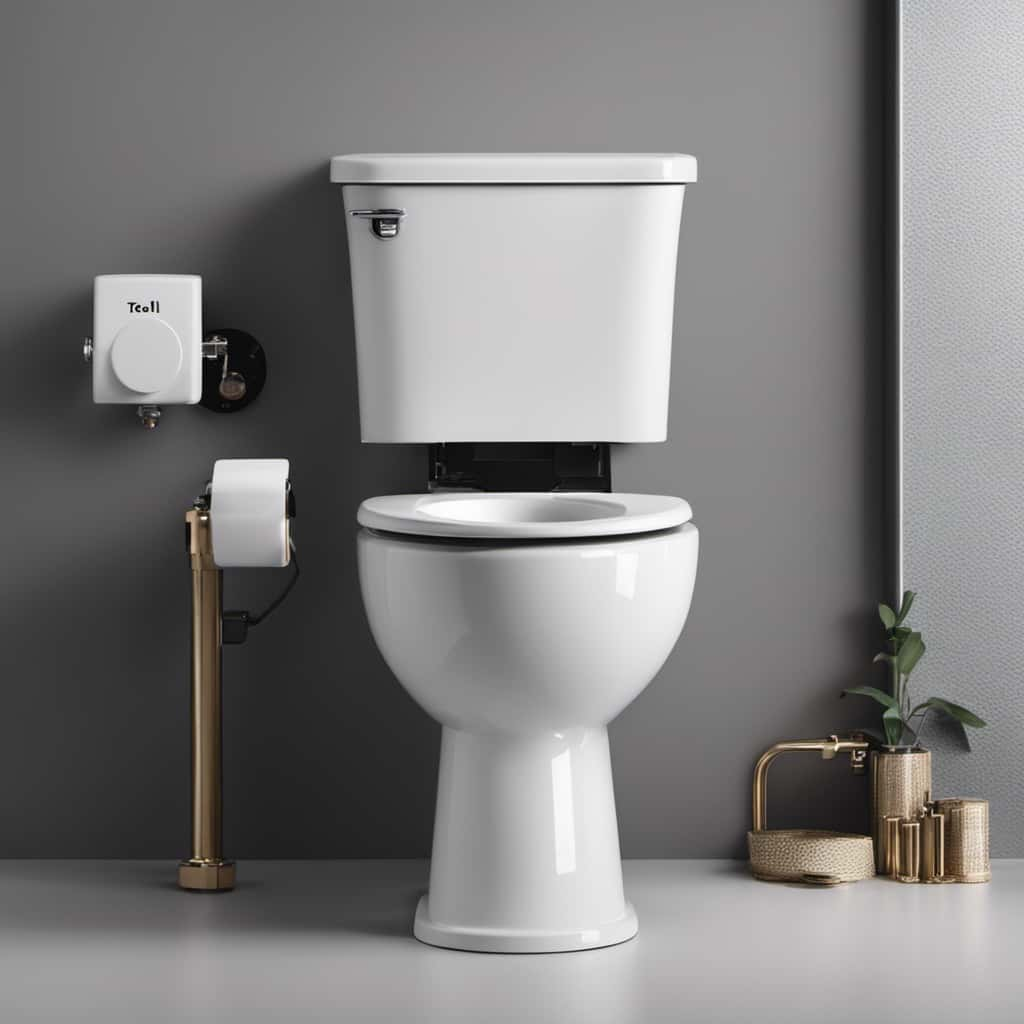
Treating the Waste: How Sewage Is Processed
How is sewage processed to treat the waste?
Sewage treatment is a crucial step in water treatment and waste management. It involves a complex process that aims to remove contaminants and harmful substances from sewage before it’s released back into the environment. Here is a brief overview of how sewage is processed:
- Primary Treatment: In this stage, large solid particles, such as debris and grit, are removed through physical processes like screening and sedimentation. The sewage is then passed through sedimentation tanks, where heavy solids settle at the bottom and are removed as sludge.
- Secondary Treatment: This stage focuses on the biological breakdown of organic matter in the sewage. The sewage is transferred to aeration tanks where aerobic bacteria break down the organic compounds. This process, called activated sludge, helps remove pollutants and reduces the biological oxygen demand (BOD) of the wastewater.
- Tertiary Treatment: Also known as advanced or final treatment, this stage further removes any remaining impurities and contaminants. Advanced techniques such as filtration, disinfection, and chemical treatments are employed to ensure the water meets the required quality standards before it’s discharged or reused.
Sewage treatment plays a vital role in protecting public health and the environment by ensuring that wastewater is properly processed and purified before it reenters the ecosystem.
Where Does the Treated Water Go
After undergoing the necessary treatment processes, where does the treated water from sewage go? The management of treated water is a critical aspect of sewage treatment facilities. Once the water has been treated, it’s typically discharged into the environment, either into land or water bodies. Treated water management is an important consideration due to the potential ecological consequences of its disposal.
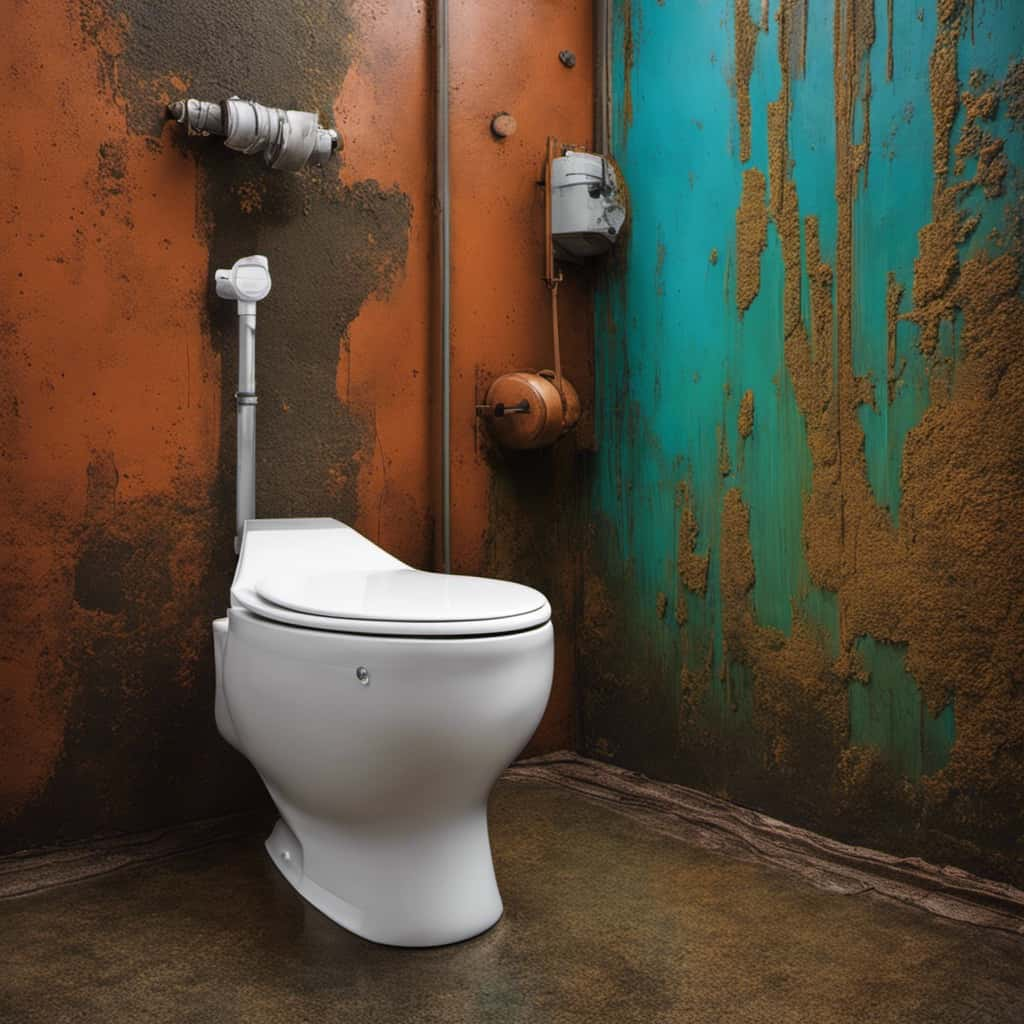
When it comes to land disposal, several methods are commonly used. One approach is to utilize the treated water for irrigation purposes, providing a sustainable solution for agricultural needs. This not only helps conserve freshwater resources but also ensures that the nutrients present in the treated water are beneficial for plant growth. Another option is to recharge the treated water into underground aquifers, replenishing groundwater sources and maintaining water availability.
On the other hand, disposing of treated water into water bodies, such as rivers or oceans, is also a common practice. This method allows for the dilution and dispersion of the treated water, minimizing any potential impacts on the receiving environment. However, careful monitoring is necessary to ensure that the discharged water meets regulatory standards and doesn’t harm aquatic ecosystems.
In the subsequent section, we’ll explore the different disposal methods in more detail, examining the advantages and disadvantages of land and sea disposal and their implications for the environment.
Land or Sea: Different Disposal Methods
Continuing the discussion on treated water management, I typically discharge the treated water into the environment, either onto land or into water bodies. The choice of disposal method depends on various factors such as local regulations, environmental impact assessments, and the availability of suitable infrastructure.

Here are the different disposal methods and their implications:
- Land Disposal: This method involves releasing the treated water onto designated land areas. It can be beneficial as the soil acts as a natural filter, removing any remaining contaminants. However, it’s crucial to ensure that the treated water is compatible with the soil type and that there’s no risk of groundwater contamination.
- Ocean Disposal: In some cases, treated water is discharged into nearby water bodies such as rivers, lakes, or oceans. While this method provides a convenient solution for water management, it can contribute to ocean pollution if not properly monitored. It’s essential to conduct regular water quality testing and adhere to strict discharge limits to minimize the environmental impact.
- Reuse and Recycle: Another option is to reuse the treated water for non-potable purposes such as irrigation, industrial processes, or toilet flushing. This approach conserves water resources and reduces the need for disposal altogether.
Considering the potential risks associated with land disposal and ocean pollution, it’s crucial to assess the environmental impact of toilet waste disposal.
The Environmental Impact of Toilet Waste Disposal
As I delve into the environmental impact of toilet waste disposal, it’s crucial to consider the ramifications of our chosen disposal methods on the ecosystem. Proper toilet waste management is essential for maintaining a sustainable sanitation system that minimizes harm to the environment.
The disposal of toilet waste can have significant environmental consequences. Improper management can lead to the contamination of water sources and the spread of diseases. When waste isn’t adequately treated, it can contain harmful pathogens, nutrients, and chemicals that can pollute rivers, lakes, and groundwater. This contamination poses risks to both human health and the ecosystem.

To mitigate these risks, sustainable sanitation practices should be implemented. This involves the proper treatment and disposal of toilet waste to minimize its impact on the environment. Various methods can be employed, such as wastewater treatment plants, composting toilets, and anaerobic digestion systems. These systems aim to remove harmful pathogens, reduce nutrient levels, and produce safe byproducts.
Frequently Asked Questions
How Often Should a Toilet Be Cleaned and Maintained?
As an expert in toilet cleaning and maintenance, I can provide valuable insights on toilet cleaning frequency and maintenance tips.
Regular cleaning is crucial to maintain a hygienic and odor-free toilet. It’s recommended to clean the toilet at least once a week, focusing on the bowl, seat, and surrounding areas.
Additionally, proper maintenance involves checking for leaks, ensuring the flushing mechanism works effectively, and using appropriate cleaning products. These practices contribute to a well-maintained and functional toilet.
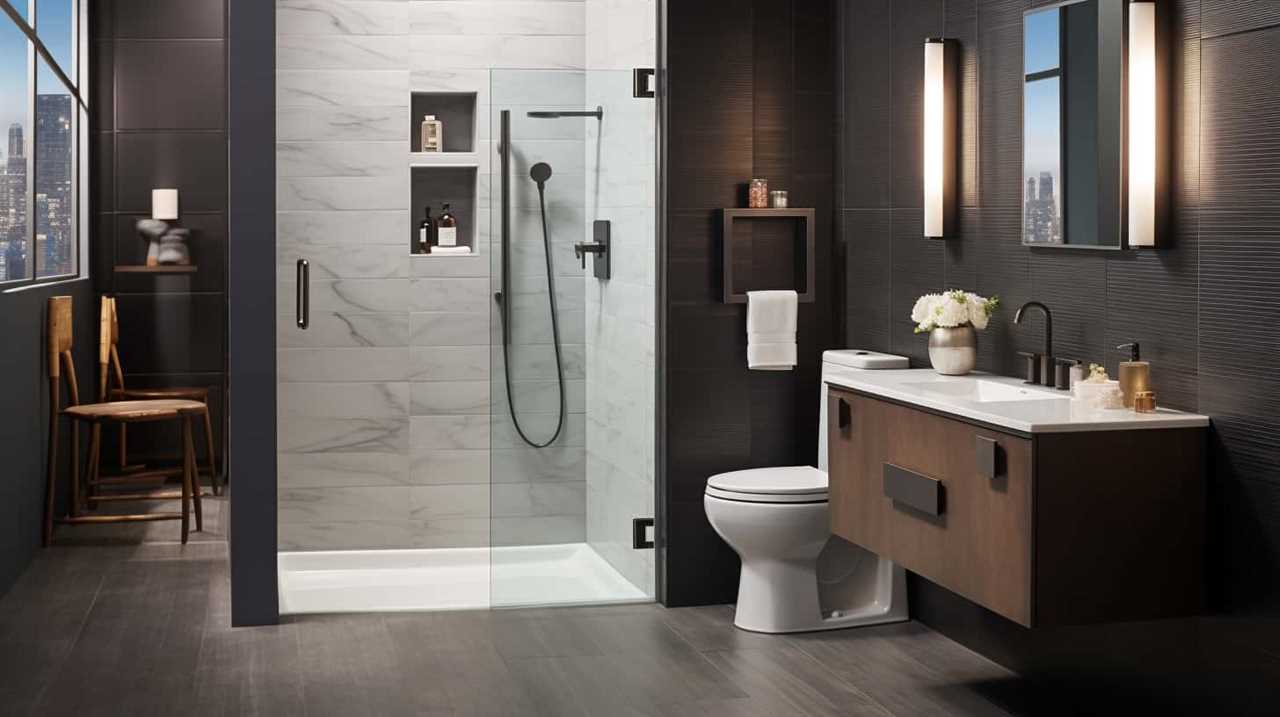
Is It Safe to Flush Toilet Paper Down the Toilet?
Is it safe to flush toilet paper down the toilet?
As a master of toilet maintenance, I must warn you of the environmental impact of flushing toilet paper. While it may seem convenient, it can lead to clogged pipes and sewer backups.
It’s time we explore toilet paper alternatives, such as bidets or reusable cloth wipes. By making this small change, we can reduce our reliance on single-use products and protect our precious plumbing systems.
Can Flushing Certain Items Down the Toilet Cause Plumbing Issues?
Flushing certain items down the toilet can indeed cause plumbing issues. Items like wet wipes, feminine hygiene products, and paper towels can clog the pipes and lead to expensive repairs.
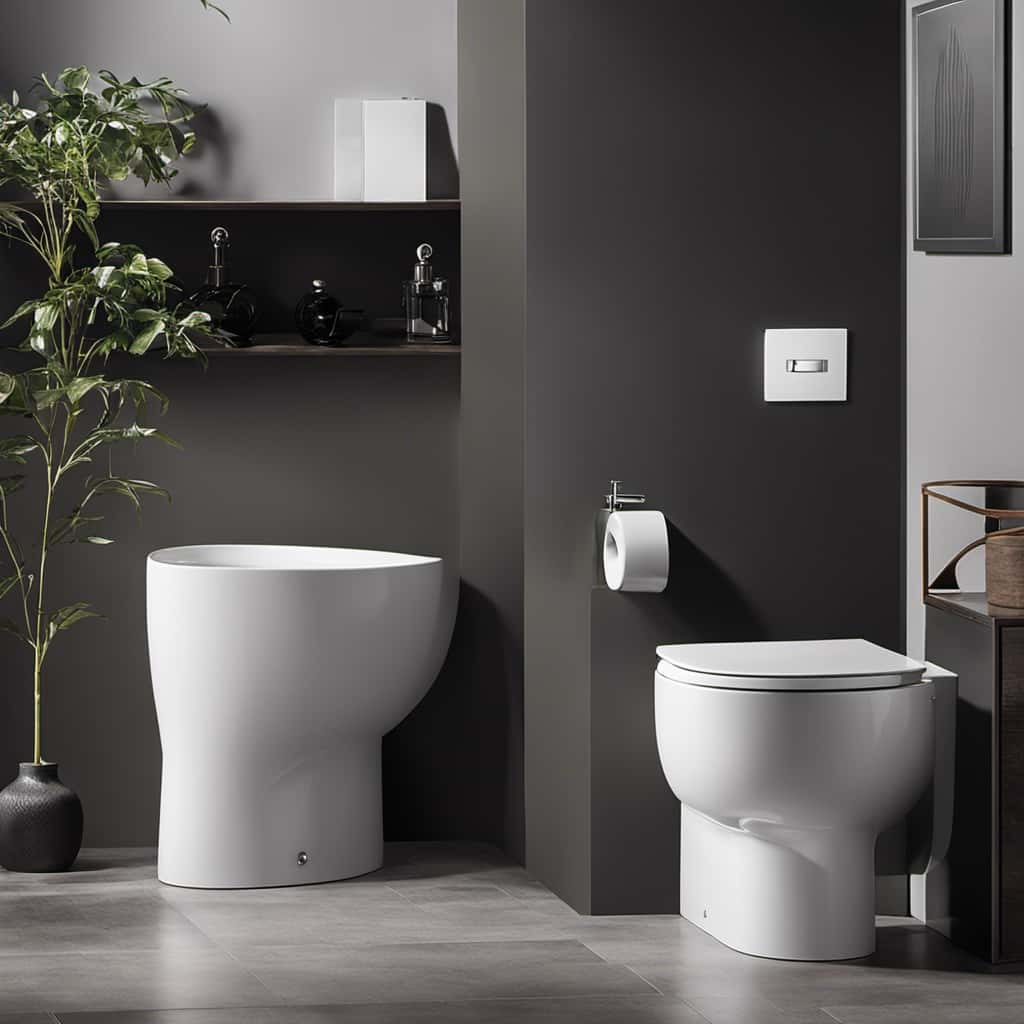
Not only does this create inconvenience, but it also has a significant environmental impact. These items don’t break down easily and can end up in our waterways, harming wildlife and ecosystems.
It’s important to only flush toilet paper and bodily waste to avoid these problems.
How Does the Toilet System Prevent Odors From Escaping?
Toilet ventilation is a crucial part of toilet odor control. The system is designed to prevent odors from escaping and causing discomfort.
By using a combination of air vents and traps, the toilet system creates a barrier that traps and contains unpleasant smells.

The air vents allow for the circulation of fresh air, while the traps prevent odors from flowing back into the bathroom.
This ensures a clean and odor-free environment for users.
Are There Any Regulations or Guidelines for Toilet Waste Disposal?
There are strict regulations on sewage treatment and guidelines for septic tank maintenance. These rules ensure that waste disposal is handled in a safe and efficient manner.
Compliance with these regulations is crucial for maintaining a healthy environment and preventing contamination of water sources. Proper treatment and disposal of toilet waste are essential to protect public health and prevent the spread of diseases.

Adhering to these guidelines helps ensure that our sewage systems function effectively and sustainably.
Conclusion
In conclusion, the journey of toilet waste is a fascinating and complex process. From the moment we flush, the waste travels through a network of sewer pipes, undergoing treatment at sewage treatment plants before being disposed of.
Whether it ends up on land or in the sea, the environmental impact of toilet waste disposal can’t be ignored. Understanding the intricate system behind toilet drainage highlights the importance of responsible waste management for the health of our ecosystems.
With an impeccable eye for detail and a passion for bathroom-related, Ava leads our editorial team gracefully and precisely.
Under her guidance, Best Modern Toilet has flourished as the go-to resource for modern bathroom enthusiasts. In her free time, you might find Ava exploring antique shops and looking for vintage bathroom fixtures to add to her collection.
FAQ - Advanced Bathroom Queries
Why Won’t My Toilet Flush Without Power

If you’ve ever been stuck in a challenging situation during a power outage, frantically trying to figure out why your toilet isn’t flushing, don’t worry – we’re here to explain this common dilemma.
In this article, we’ll explore the role of electricity in toilet flushing and delve into the components of a power-dependent flushing system. We’ll also uncover the reasons behind toilet flushing failure during power outages and provide alternative methods to ensure a functional toilet, even without power.
So, let’s dive in and master the art of flushing without electricity!
Key Takeaways
- Electricity is essential for the flush mechanism of modern toilets.
- Power outages can disrupt the functioning of the components that control flushing.
- Alternative methods for flushing a toilet without power include manually filling the tank, pouring water into the bowl, or using portable toilet options.
- Preparing for power outages involves installing backup power sources, stocking up on water, considering water-saving toilets, and educating oneself on alternative flushing methods.
The Role of Electricity in Toilet Flushing
In our experience, the main role of electricity in toilet flushing is through the operation of the electrically-powered flush mechanism. This mechanism is responsible for initiating the flushing action by activating the water flow and creating the necessary pressure to remove waste from the bowl.

The impact of water pressure on toilet flushing can’t be overstated. Adequate water pressure ensures a strong and efficient flush, while low water pressure can result in incomplete waste removal and potential clogs.
The history of electricity in toilet technology dates back to the early 20th century when electrically-powered flush mechanisms were first introduced. Since then, advancements in technology have led to more efficient and effective flushing systems, improving overall toilet performance.
Understanding the role of electricity in toilet flushing is crucial for maintaining a properly functioning toilet system.
Components of a Power-Dependent Flushing System
To understand the components of a power-dependent flushing system, we need to examine the inner workings of the toilet. Power saving toilet technology has become increasingly popular due to its ability to reduce energy consumption and minimize the impact of power outages on water pressure. Let’s take a closer look at the key components involved in this system.

| Component | Function |
|---|---|
| Flapper valve | Controls the release of water from the tank into the bowl |
| Fill valve | Regulates the water level in the tank |
| Flush valve | Opens to allow water to flow into the bowl during flushing |
During a power outage, the lack of electricity can disrupt the functioning of these components, particularly the flapper valve. Without power, the flapper valve may fail to open, preventing the water from being released into the bowl. Additionally, the fill valve may not be able to replenish the water in the tank, leading to decreased water pressure and a weaker flush. Understanding these components helps us comprehend why a toilet may not flush without power.
Common Reasons for Toilet Flushing Failure During Power Outages
When power outages occur, we often experience toilet flushing failure due to several common reasons. One of the main causes is the reliance on electricity for the flushing mechanisms of modern toilets. These mechanisms, such as electric pumps or pressure-assisted systems, require power to operate. Without electricity, these mechanisms can’t generate the necessary force to flush the toilet effectively.
Another reason for flushing failure during power outages is a clogged or malfunctioning toilet. Blockages in the pipes or a faulty flush valve can impede the flushing process, even when power is available. Troubleshooting toilet flushing issues should involve checking for blockages, ensuring the flush valve is functioning properly, and considering alternative methods for flushing.
Understanding these common reasons for toilet flushing failure is crucial in finding solutions and ensuring proper functionality, especially during power outages. In the next section, we’ll explore alternative methods for flushing a toilet without power.

Alternative Methods for Flushing a Toilet Without Power
During power outages, when the reliance on electricity for toilet flushing mechanisms renders them ineffective, it’s important to consider alternative methods for flushing a toilet without power.
In emergency situations, there are several solutions that can be implemented to ensure proper sanitation and water conservation.
One option is to manually fill the toilet tank with water using a bucket or container. By pouring the water into the bowl, it will create enough force to flush the waste down the drain.
Another method is to use a portable camping toilet or a portable toilet seat that can be placed on top of a bucket or other container.

These emergency solutions can help maintain hygiene and prevent the spread of diseases during power outages, while also conserving water.
Preparing for Power Outages: Tips to Ensure a Functional Toilet
In order to prepare for power outages and ensure a functional toilet, we can continue the discussion by exploring some helpful tips. Here are three key suggestions to enhance toilet hygiene and emergency preparedness:
- Install a backup power source: Consider investing in a generator or a battery backup system to keep essential appliances, including your toilet, running during power outages. This will allow you to maintain proper sanitation even when the electricity is down.
- Stock up on water: Have an adequate supply of water stored for emergencies. You can use this water to manually flush the toilet by pouring it directly into the bowl. Aim for at least one gallon of water per person per day to cover your basic needs.
- Learn manual flushing techniques: Familiarize yourself with alternative methods for flushing the toilet without power. For instance, you can manually fill the toilet tank using a bucket of water to create enough pressure for a flush.
Frequently Asked Questions
How Does a Power Outage Affect the Operation of a Toilet?
During a power outage, a toilet may not flush because it relies on electricity to activate the flushing mechanism. Without power, the backup generator or emergency plumbing may be needed to restore functionality.
Can I Manually Flush a Toilet That Is Dependent on Electricity?
Yes, you can manually flush a toilet that relies on electricity. By using the emergency toilet flush or manually filling the tank and operating the lever, you can still achieve a functioning flush without power.

Are There Any Alternative Methods to Flush a Toilet Without Power?
Emergency toilet solutions include DIY toilet flush options. When there is no power, alternative methods can be used to manually flush a toilet. These methods ensure functionality during emergencies or power outages.
What Are the Common Reasons for Toilet Flushing Failure During a Power Outage?
The common reasons for toilet flushing failure during a power outage include a lack of power to operate the toilet flushing mechanism and potential issues with the water supply. Troubleshooting toilet flushing may involve checking the power source and ensuring proper water flow.
How Can I Prepare My Toilet for a Power Outage to Ensure It Remains Functional?
To prepare our toilet for a power outage and ensure it remains functional, we can take measures such as installing a backup generator, using water conservation techniques, and considering portable toilet options.
Conclusion
In conclusion, power outages can disrupt the functioning of toilets, which rely on electricity for flushing.

One interesting statistic to consider is that during a power outage, the average person flushes the toilet around 2,500 times per year.
This visualizes the potential inconvenience and importance of having alternative methods in place to ensure a functional toilet during such situations.
With an impeccable eye for detail and a passion for bathroom-related, Ava leads our editorial team gracefully and precisely.
Under her guidance, Best Modern Toilet has flourished as the go-to resource for modern bathroom enthusiasts. In her free time, you might find Ava exploring antique shops and looking for vintage bathroom fixtures to add to her collection.
FAQ - Advanced Bathroom Queries
Are You Allowed to Flush Toilet Paper

Are we overlooking the consequences of flushing toilet paper?
In this article, we explore the environmental consequences and plumbing issues associated with this common practice.
We’ll also delve into alternatives and proper disposal methods recommended by plumbing and environmental experts.
Join us as we navigate the complexities of this topic and gain a deeper understanding of whether we are allowed to flush toilet paper.

Get ready to master the art of responsible waste management.
Key Takeaways
- Flushing toilet paper contributes to water scarcity and wastes valuable water resources.
- Flushing too much toilet paper can lead to clogging and damage to sewage systems.
- Composting toilets and bidet attachments are sustainable alternatives to flushing toilet paper.
- Proper disposal methods, such as recycling and composting, help reduce the environmental impact of toilet paper.
Environmental Impact of Flushing Toilet Paper
Flushing toilet paper has a significant environmental impact, and we should be aware of its consequences. When we flush toilet paper, it contributes to two major environmental issues: water scarcity and deforestation.
Firstly, the production of toilet paper requires a significant amount of water. With water scarcity becoming a growing concern around the world, it’s important to recognize that flushing toilet paper wastes this valuable resource.
Secondly, the production of toilet paper contributes to deforestation. Trees are cut down to make pulp, which is then processed into toilet paper. This deforestation not only destroys ecosystems and habitats but also reduces the Earth’s ability to absorb carbon dioxide.

Therefore, it’s crucial that we consider alternative options, such as using bidets or recycled toilet paper, to minimize the environmental impact of flushing toilet paper.
Plumbing Issues Caused by Flushing Toilet Paper
Although it may seem convenient, flushing toilet paper can lead to various plumbing issues. One of the most common problems is toilet paper clogging. When too much toilet paper is flushed, it can accumulate and create blockages in the pipes. This can result in toilets that do not flush properly or even overflowing toilets. In addition to clogging, flushing toilet paper can also cause damage to the sewage system. The fibers in toilet paper do not break down easily, especially in older plumbing systems. Over time, these fibers can build up and cause damage to the pipes, leading to costly repairs. To illustrate the potential consequences of flushing toilet paper, refer to the table below:
| Plumbing Issues Caused by Flushing Toilet Paper |
|---|
| Toilet paper clogging |
| Sewage system damage |
To avoid these problems, it is best to dispose of toilet paper in a waste bin instead of flushing it. This simple change in behavior can help maintain the integrity of your plumbing system and prevent unnecessary expenses.
Alternatives to Flushing Toilet Paper
To avoid the plumbing issues caused by flushing toilet paper, we can explore alternative methods of disposal.

One such alternative is the use of composting toilets. Composting toilets are designed to efficiently break down human waste, including toilet paper, using natural processes. These toilets separate solid waste from liquid waste and utilize aerobic bacteria to decompose the organic matter. The resulting compost can then be used as a nutrient-rich fertilizer for plants.
Another alternative is the use of bidet attachments. Bidets are devices that use water to clean oneself after using the toilet. Bidet attachments can be easily installed on existing toilets and provide a more hygienic and environmentally friendly option.
Proper Disposal Methods for Toilet Paper
We can dispose of toilet paper properly by simply throwing it in the designated trash bin.
However, there are also other environmentally friendly options for toilet paper disposal. One option is toilet paper recycling. Some companies specialize in recycling toilet paper, where it’s collected, processed, and turned into new paper products. This not only reduces waste but also saves trees and energy.

Another option is composting toilet paper. Composting toilet systems are designed to break down organic waste, including toilet paper, into nutrient-rich compost. This compost can then be used as fertilizer for gardens and plants. It’s important to note that not all toilet paper is suitable for composting, so it’s essential to choose toilet paper that’s specifically labeled as compostable.
Recommendations From Plumbing and Environmental Experts
According to plumbing and environmental experts, our recommendation is to consult with your local water and sanitation authorities for guidelines on flushing toilet paper. These authorities are knowledgeable about the specific waste management systems in your area and can provide you with accurate information on how to properly dispose of toilet paper.
It’s important to follow their guidelines to ensure the efficient and environmentally friendly management of toilet paper waste.
Additionally, it’s worth considering eco-friendly toilet paper options, which are becoming increasingly popular. These options are made from recycled materials or sustainable sources, reducing the environmental impact associated with traditional toilet paper production.

Frequently Asked Questions
Is It True That Flushing Toilet Paper Can Cause Plumbing Issues?
Flushing toilet paper can cause plumbing issues. The plumbing consequences include clogged pipes and potential damage to the septic system. It is important to properly dispose of toilet paper in a waste bin to prevent these problems.
What Are Some Alternative Options to Flushing Toilet Paper?
When it comes to the question of alternative options to flushing toilet paper, one option that comes to mind is using a bidet. The benefits of using bidets include improved hygiene and reduced paper waste.
How Should Toilet Paper Be Properly Disposed Of?
Toilet paper should be properly disposed of by either recycling it or composting it. Recycling toilet paper helps to reduce waste, while composting toilet paper allows it to break down naturally and become a nutrient-rich soil amendment.
What Are the Recommendations From Plumbing Experts Regarding Toilet Paper Usage?
Plumbing experts recommend considering toilet paper alternatives and eco-friendly options. It’s essential to be mindful of proper disposal methods and not flush non-flushable items to prevent clogs and damage to the plumbing system.

How Does Flushing Toilet Paper Impact the Environment?
Flushing toilet paper can have a negative impact on the environment. Toilet paper production contributes to deforestation, as trees are cut down to make it. Proper disposal methods, such as using a designated bin, can help mitigate these effects.
Conclusion
In conclusion, it’s crucial to consider the environmental impact and potential plumbing issues caused by flushing toilet paper.
Instead, explore alternatives such as bidets or wet wipes that can be disposed of properly.
By doing so, we can help preserve our planet and avoid costly plumbing repairs.

Remember, like a drop in a vast ocean, our small choices can create ripples of positive change.
With an impeccable eye for detail and a passion for bathroom-related, Ava leads our editorial team gracefully and precisely.
Under her guidance, Best Modern Toilet has flourished as the go-to resource for modern bathroom enthusiasts. In her free time, you might find Ava exploring antique shops and looking for vintage bathroom fixtures to add to her collection.
FAQ - Advanced Bathroom Queries
Can You Flush Toilet if Water Is off

Picture a scenario in which the water in your household suddenly vanishes, rendering you unable to flush the toilet.
Don’t panic! In this article, we will explore various methods to overcome this challenge and keep your bathroom functioning smoothly.
From understanding different types of toilets to utilizing alternative water sources and even resorting to using buckets or containers, we will equip you with the knowledge to handle such situations with ease.
Prepare for emergencies and master the art of flushing without water!

Key Takeaways
- Understanding the type of toilet you have is crucial in determining if it can be flushed when the water is off.
- Alternative water sources like rainwater harvesting and greywater systems can be used for flushing toilets during water shortages.
- Regular maintenance of toilets is important to ensure proper functioning and longevity of the system.
- Emergency preparedness involves keeping emergency supplies, having backup water sources, learning makeshift plumbing techniques, and staying informed about local emergency protocols and resources.
Type of Toilet Matters
We found that the type of toilet you have will determine whether or not you can flush it when the water is off. This is particularly relevant for portable toilets and composting toilets.
Portable toilets, which are commonly used in camping or outdoor events, typically have their own built-in flushing system that doesn’t rely on a constant water supply. Therefore, even if the water is turned off, you can still flush these toilets.
On the other hand, composting toilets, which are designed to break down waste into compost, don’t require water for flushing. Instead, they use a dry composting process, making them completely independent of water supply.
Understanding the type of toilet you have is crucial in determining whether or not you can flush it when the water is off.

Now, let’s explore alternative water sources for flushing toilets.
Alternative Water Sources
Now let’s explore the alternative water sources available for flushing toilets when water is turned off. When faced with a water shortage, it’s important to consider rainwater harvesting and water conservation techniques as viable options. Rainwater harvesting involves collecting and storing rainwater for later use. This can be done by installing rain barrels or cisterns that capture rainwater from rooftops and divert it to a storage container. To give you a better understanding of the options available, here is a table outlining some alternative water sources for flushing toilets:
| Alternative Water Sources | Description |
|---|---|
| Rainwater harvesting | Collecting and storing rainwater for later use. |
| Water conservation | Implementing strategies to reduce water usage. |
Using a Bucket or Container
To continue the discussion from the previous subtopic, let’s explore how we can utilize a bucket or container to flush the toilet when the water is turned off.
When it comes to using a bucket or container for flushing, there are a few key points to consider:

- Bucket vs. container: Both options can be used effectively for flushing. A bucket offers a larger capacity, allowing for multiple flushes with less trips to refill. On the other hand, a container may be more convenient to carry and pour into the toilet.
- Water conservation methods: Using a bucket or container for flushing helps conserve water during periods of water shortage. By manually pouring water into the toilet, you can avoid using unnecessary amounts of water from alternative sources.
- Proper handling: It’s important to handle the bucket or container with care to avoid spills and ensure efficient flushing. Be mindful of the weight and pour steadily to avoid accidents.
- Cleaning and sanitizing: After using a bucket or container to flush the toilet, it’s crucial to clean and sanitize them thoroughly to maintain hygiene and prevent the spread of bacteria.
In order to maintain a functional toilet system, it’s important to regularly maintain and inspect the various components. Now, let’s move on to discussing the importance of regular maintenance.
Importance of Regular Maintenance
Regular maintenance of a toilet system is crucial for ensuring its proper functioning and longevity. Neglecting regular maintenance can lead to various issues such as clogs, leaks, and inefficiency. Hiring professionals for toilet maintenance offers numerous benefits. They have the expertise and tools to identify and fix problems before they escalate, saving you time, money, and frustration. Additionally, professionals can provide valuable advice on how to optimize your toilet system’s performance and extend its lifespan.
To illustrate the importance of regular maintenance, consider the following common mistakes that homeowners make:
| Common Maintenance Mistakes | Consequences |
|---|---|
| Neglecting to clean the toilet regularly | Accumulation of dirt, stains, and unpleasant odors |
| Failing to check and replace worn-out parts | Increased risk of leaks and decreased efficiency |
| Ignoring unusual noises or slow flushing | Potential for major clogs or system failures |
Emergency Preparedness Tips
After prioritizing regular maintenance, it’s important to be prepared for emergencies in case the water to your toilet is shut off. Here are four essential emergency preparedness tips to help you navigate such situations:

- Emergency Supplies: Keep a stash of essential items such as bottled water, non-perishable food, flashlights, batteries, and a portable radio. These supplies will come in handy during a water outage or any other emergency.
- Water Storage: Consider storing additional water in large containers or water storage tanks. This will ensure you have access to water for flushing the toilet and other necessary uses during a water shutdown.
- Sanitation Alternatives: In the absence of water, utilize alternative sanitation methods, such as using disposable hygiene products or keeping a supply of sanitary wipes and hand sanitizer.
- Communication Plans: Develop a communication plan with your household members to stay connected during emergencies. Establish a meeting point and assign responsibilities to ensure everyone’s safety and well-being.
Frequently Asked Questions
Can I Flush My Toilet if the Water Supply to My House Is Temporarily Shut Off?
Yes, we can flush the toilet if the water is temporarily shut off. There are alternative toilet flushing techniques, such as pouring a bucket of water into the bowl. It’s important to conserve water in these situations.
What Types of Toilets Are More Likely to Be Able to Flush Without Water?
Waterless toilets, such as composting toilets and incinerating toilets, are more likely to be able to flush without water. DIY methods for flushing without water include pouring a bucket of water into the bowl.
Are There Any Alternative Water Sources That Can Be Used to Flush the Toilet if the Water Is Off?
Yes, there are alternative water sources that can be used to flush the toilet if the water is off. Options include using stored rainwater, melted snow, or even water from other sources like a swimming pool, as long as water conservation practices are followed.
Can I Use a Bucket or Container of Water to Manually Flush the Toilet?
Yes, we can use a bucket or container of water to manually flush the toilet. It’s a common alternative when the water is off. Just pour the water forcefully into the bowl to create a flushing effect.

Why Is Regular Maintenance of the Toilet Important for Its Proper Functioning, Especially During Water Shortages or Emergencies?
Regular toilet maintenance is crucial for proper functioning, especially during water shortages or emergencies. By keeping the toilet clean, checking for leaks, and avoiding flushing non-flushable items, you can prevent clogs and ensure it works efficiently.
Conclusion
So, the next time you find yourself in a situation where the water is off and you need to use the toilet, remember that it’s not the end of the world.
With the right type of toilet, alternative water sources, and a little improvisation, you can still flush and maintain your sanity.
Just don’t forget the importance of regular maintenance and emergency preparedness.

After all, who knew that something as simple as flushing a toilet could become a lesson in survival?
With an impeccable eye for detail and a passion for bathroom-related, Ava leads our editorial team gracefully and precisely.
Under her guidance, Best Modern Toilet has flourished as the go-to resource for modern bathroom enthusiasts. In her free time, you might find Ava exploring antique shops and looking for vintage bathroom fixtures to add to her collection.
-

 Reviews2 months ago
Reviews2 months agoBest Toilet Air Freshener: Top 10 Picks for a Fresh-Smelling Bathroom [2024]
-

 FAQ - Advanced Bathroom Queries3 months ago
FAQ - Advanced Bathroom Queries3 months agoGuide: How to Use Drano Max Gel in Your Toilet
-

 FAQ - Advanced Bathroom Queries1 month ago
FAQ - Advanced Bathroom Queries1 month agoWhich Countries Use Bidets the Most
-

 FAQ - Advanced Bathroom Queries3 months ago
FAQ - Advanced Bathroom Queries3 months agoWhy Does My Poop Leave Streaks in the Toilet
-

 Reviews2 months ago
Reviews2 months agoBest Waterless Toilets: Top Options for Eco-Friendly Bathrooms [2024]
-

 Buying Guides2 months ago
Buying Guides2 months agoWhat to Do When You Accidentally Flushed Something Down the Toilet
-

 FAQ - Advanced Bathroom Queries3 months ago
FAQ - Advanced Bathroom Queries3 months agoHow Do Toilets Work in Bali
-

 FAQ - Advanced Bathroom Queries3 months ago
FAQ - Advanced Bathroom Queries3 months agoWhat to Do if You Accidentally Flushed Something Down the Toilet





















